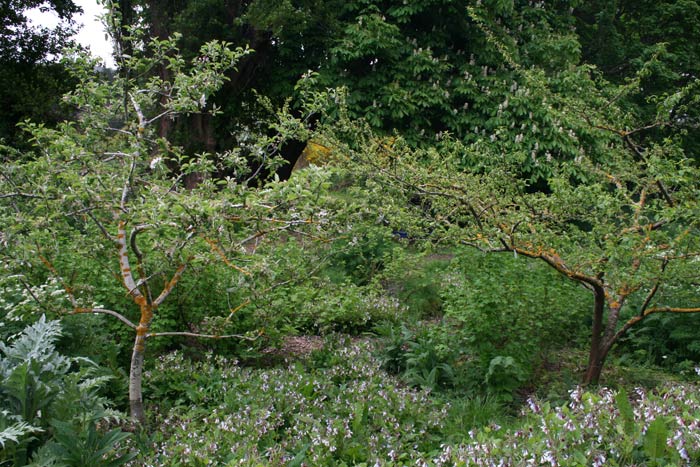 I just adore this time of year in the edible garden. I especially enjoy the food forest (edible forest garden) parts of the garden where all the work of weeding, mulching, transplanting and pruning was done in the winter and now is just a time for observing the fresh new growth, flowering and insects doing their pollination (and parisitising!).
I just adore this time of year in the edible garden. I especially enjoy the food forest (edible forest garden) parts of the garden where all the work of weeding, mulching, transplanting and pruning was done in the winter and now is just a time for observing the fresh new growth, flowering and insects doing their pollination (and parisitising!).
This picture is taken in Waitati at a garden where I work. In it are apple and plum trees, redcurrants, perennial vegetables/ herbs / multifunctional dynamic accumulators: sorrel, lovage, globe artichoke, lemon balm, sweet cicily, russian and evergreen comfrey.
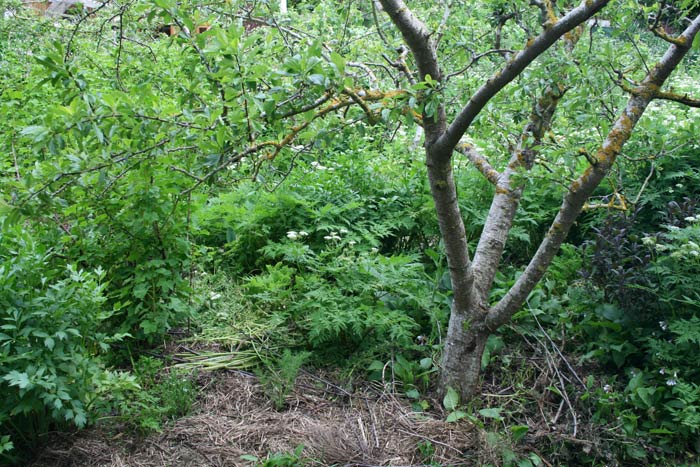 I am extra excited to be thinking about food forests as I am co-tutoring a workshop on them later in the month, with Robina McCurdy and Jon Foote as part of the LOCALISING FOOD TOUR, look out for an upcoming post with detals.
I am extra excited to be thinking about food forests as I am co-tutoring a workshop on them later in the month, with Robina McCurdy and Jon Foote as part of the LOCALISING FOOD TOUR, look out for an upcoming post with detals.
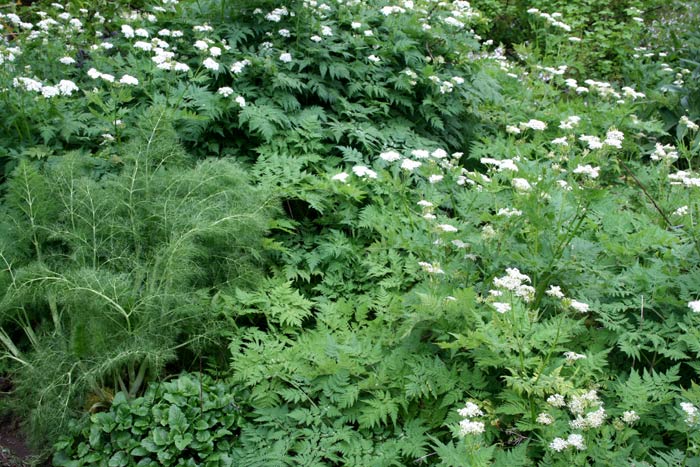 Fennel, sweet cicely and lemon balm. These are planted under fruit trees for a range of benefits. For the trees they provide a ground cover, excluding weeds and mining up minerals from deep in the soil they deposit them on the soil surface for the fruit trees to feed on. For us they provide herbal tea, salad crops, rhubarb sweetening and delicious seeds.
Fennel, sweet cicely and lemon balm. These are planted under fruit trees for a range of benefits. For the trees they provide a ground cover, excluding weeds and mining up minerals from deep in the soil they deposit them on the soil surface for the fruit trees to feed on. For us they provide herbal tea, salad crops, rhubarb sweetening and delicious seeds.
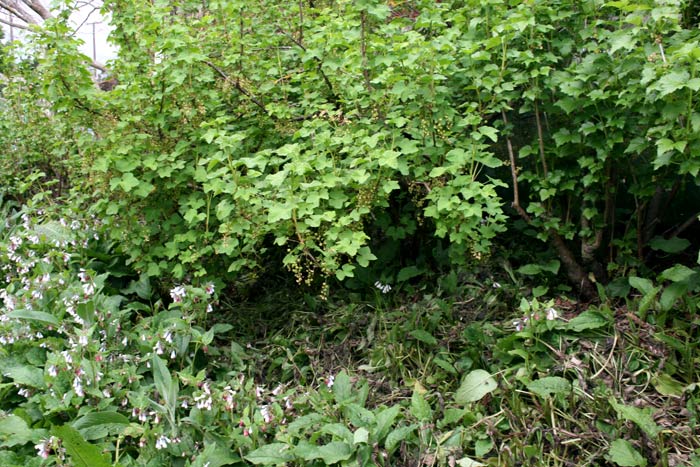 Here Russian and evergreen comfrey growing under berry fruits has been slashed and dropped to feed the soil. This really enjoyable job is done two or three times during the summer.
Here Russian and evergreen comfrey growing under berry fruits has been slashed and dropped to feed the soil. This really enjoyable job is done two or three times during the summer.
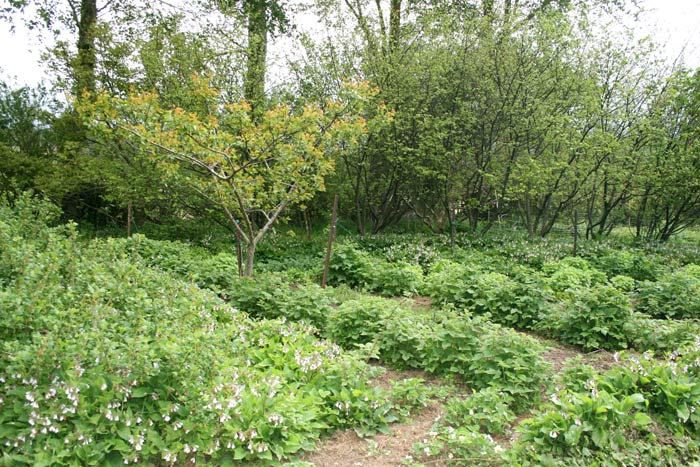 Gooseberries with comfrey underneath, autumn raspberry rows, an apricot and hazel nuts behind, in a well sheltered sun trap.
Gooseberries with comfrey underneath, autumn raspberry rows, an apricot and hazel nuts behind, in a well sheltered sun trap.
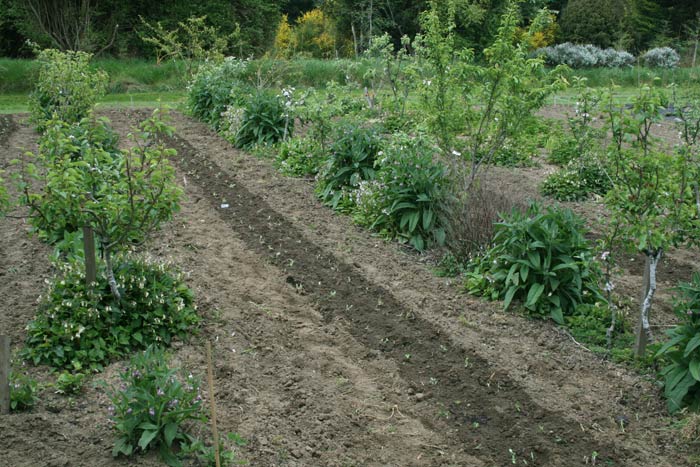 Fruit trees we planted very closely in rows with companion plants, in order to trial many varieties in a small space. Sunflowers are planted as a cash crop in between the rows while the trees are small.
Fruit trees we planted very closely in rows with companion plants, in order to trial many varieties in a small space. Sunflowers are planted as a cash crop in between the rows while the trees are small.